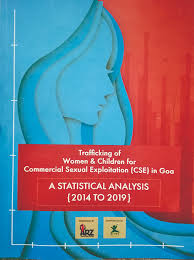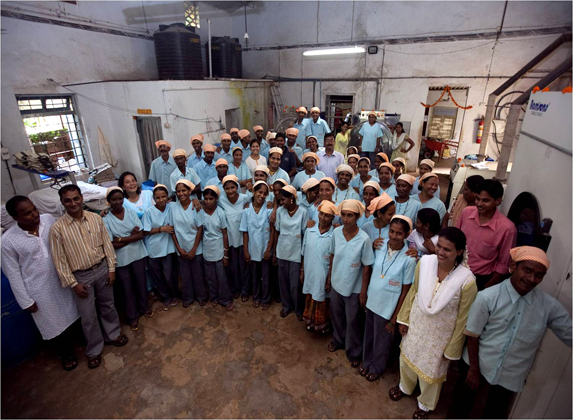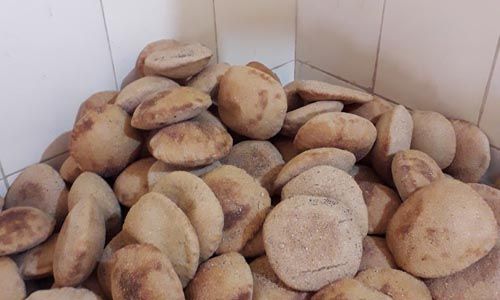“Some burn us, some pull our hair. They feel since they have paid, they can do any thing," is a poignant account. Trafficking to Goa, saw a reduction in the last 5 years from the NE but Maharashtra, WB and Delhi were the top two source states. Among the 353 rescued, 298 were Indian and 55 foreign. Earlier, limited to hotels/massage parlors, now prostitution is practiced in residential areas, Being tech-savvy in CSA has become a curse.
October 11, 2019
Pushpa Iyengar
It’s a supermarket, but women are the commodities
“Prostitution is not the oldest profession of the world... It is the oldest form of exploitation of women and children by men.” “Prostitution is not 'Easy Money' for the prostituted... It is the easiest money everybody can make off the woman, except herself.” These are among the chilling facts that makes one pause and think particularly when you encounter men, and women too sometimes, who dismiss sex workers as another species, “who are psyched and satisfying their wants also or maybe they want to improve their standard of living.”
These are harsh judgements that have a poignant counter from commercially exploited sex workers who simply ask, “But who wants to by selling her body? People say that we do it for the money, to enjoy. I feel bad, I feel like catching them and thrashing them -Nobody is born a prostitute.” Here is another heart-rending story from another victim that gives an insight into what they have to go through, largely for financial reasons. “We get all kinds of customers. Usko shaukh hai jalane ka (he likes to burn us), some pull our hair. They think since they have paid us, they can do anything.” “Prostitution is not something a woman gets habituated to and does not want to leave,” says another sex worker and certainly does not want this way of life for her daughter.
 These profundities formed the data (see picture) collected from 400 girls and women rescued between the period June 2014 to May 2019 based on which the recently released study 'Trafficking of Women & Children for Commercial Sexual Exploitation (CSE) in Goa - Statistical Analysis (2014 to 2019)', was published. This report was the result of Arz’s (Anyay Rahit Zindagi) involvement in prevention, protection and rehabilitation of the victims of CSE in Goa. Arz, which was conceived by development professionals from Tata Institute of Social Sciences back in 1997, has been appointed by the Goa police as the nodal NGO of the anti-human trafficking unit.
These profundities formed the data (see picture) collected from 400 girls and women rescued between the period June 2014 to May 2019 based on which the recently released study 'Trafficking of Women & Children for Commercial Sexual Exploitation (CSE) in Goa - Statistical Analysis (2014 to 2019)', was published. This report was the result of Arz’s (Anyay Rahit Zindagi) involvement in prevention, protection and rehabilitation of the victims of CSE in Goa. Arz, which was conceived by development professionals from Tata Institute of Social Sciences back in 1997, has been appointed by the Goa police as the nodal NGO of the anti-human trafficking unit.
The good news (if it can be called that), according to the study, was that trafficking from different states in India to Goa, saw a reduction in the last five years from the North East including Manipur, Assam, Nagaland, and Mizoram. But the new trend highlighted that Maharashtra and West Bengal were the top two source states for Goa followed by Delhi. “The NCR (National Capital Region) is developing as a source area for Goa,” says the study. The emerging trend was also that there was a reduction in the last five years in trafficking of girls and women to Goa from Nepal, but the bad news was that there was a substantial increase in trafficking from Bangladesh. Among the 353 girls and women rescued, 298 were Indian, whereas 55, were foreign nationals.
Emerging trends
In recent times it has been found that there has been an increase in usage of internet/online platforms by traffickers for commercial sexual activities (CSA) in Goa, where various forms of commercial sexual exploitation are conducted in massage parlours, hotels/lodges, flats/bungalows, disco clubs/bars, etc.
Talks with the girls revealed that the forms of CSA have changed a lot in the past five years. Earlier, limited to hotels and massage parlors, now they are found to be practiced in residential areas, mostly in big housing complexes. While hotels and lodges continue to top the list of places were CSE takes place at 269 (77.7 per cent), and massage parlours which seem to be a euphemism for a place where CSE goes on unchecked (43 or 12.4 per cent), flats and bungalows emerged as the new “hotspot” with 34 (9.8 per cent) of the girls interviewed.
In fact, I have a Mangalore-based friend with an apartment in one of the burgeoning housing complexes in Porvorim, who was asked to come for an urgent meeting because the few residents in the flats, which are mostly locked because like many owners living in the rest of the country it was just a second house to park their extra moolah, were seeing a “pattern of suspicious goings on.” Typically, in Goa where people have a second house that is locked most of the year, but hire a caretaker, have inadvertently contributed to this new trend of CSE spreading to flats and bungalows which are not public places.
Being tech-savvy in CSA has become a curse
One of the biggest challenges in the technological world we live in is the emerging trend of the usage of internet/online services for CSA that is on the increase in Goa. Platforms such as websites, facebook, locanto are used for advertising sexual services. The traffickers/ perpetrators are using the internet for recruitment, soliciting, receiving payments etc.
“Online advertisement has increased the reach of pimps to customers. It has also created anonymity for the pimps and clients. Due to increase in online commercial sexual activities, the traffickers have become faceless,” says Arunendra Pandey, Director, Arz.
“The modus operandi in Goa is as follows: the agents/pimps advertise the number online for girls. Once someone calls on the number they verify the person by asking about his Aadhar card number and hotel details. Once the pimp is sure that the person who has called is not a police decoy and is a genuine client they pass the phone number to the woman and asks her to contact the client. The woman then contacts the client and visits him at the address provided by him. She is expected to collect the money from the client and then either deposit it in the account of the pimp, or transfer it by Paytm or the trafficker sends his person and collects the money,” says the study.
But what the study underlined was not only there was an organized network spread across the country, many of the women trafficked to Goa were sent by the traffickers from their states by giving the reference of the local trafficker whom they had neither met nor seen. The fact that the girl exploited has no security net of any kind is further highlighted by this chilling fact. “In case the girl is rescued by the police, the traffickers switch off their mobiles and change the SIM. It has become increasingly difficult to arrest the persons involved in the exploitation of the girls,” says Pandey.
The profile of the victims
 The source states for CSE had Maharashtra at the top with 92 (30.7 per cent), West Bengal 66 (22.1per cent), Delhi 31 (10.4 per cent), Uttar Pradesh16 (5.4 per cent) and Goa 21 (7.1 per cent). But virtually every state in the country 'contributed' to CSE in Goa. Also the study found that the majority of the girls and women trafficked to Goa were from urban areas in the source areas.
The source states for CSE had Maharashtra at the top with 92 (30.7 per cent), West Bengal 66 (22.1per cent), Delhi 31 (10.4 per cent), Uttar Pradesh16 (5.4 per cent) and Goa 21 (7.1 per cent). But virtually every state in the country 'contributed' to CSE in Goa. Also the study found that the majority of the girls and women trafficked to Goa were from urban areas in the source areas.
Interestingly of the 400 case studies (mostly 25-35 year-olds, followed by 21-25 year olds and 18 to 21 year-olds) of the girls and women rescued during the period 2014-2019, 353 girls accepted that they were victims of CSE while the rest denied involvement in CSA or being victims of CSE. Interestingly in a majority of cases the person who lured or forced the victim in the source area for commercial sexual activity was known to her. A majority of them was her friend, followed by her colleague and male partner.
CSE in Goa is both trans-border and internal. Women and girls are trafficked to Goa from different parts of India and countries such as Nepal, Bangladesh, Uzbekistan, Kyrgyzstan, Thailand, Russia, Ukraine, and Turkmenistan. Among the foreign nationals, the majority (42 per cent) were from Bangladesh.
The girls who were trafficked to Goa were found to be mostly those who have been exploited for a long time for CSA in other places. The study found that before they were sent to Goa “the pimp was confident that the girls would not approach law enforcement agencies for assistance or reveal details about the traffickers.”
One can only hope that the heart-wrenching stories of the women who were the subjects of the study will in some way help agencies to move forward (see pic for one of the ways Arz has helped rescued women)and help them.
(To be continued)



